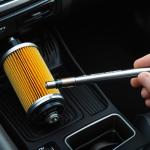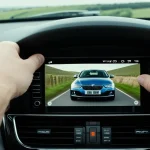Essential Winter Care for Adaptive Cruise Control Sensors
Winter conditions impose significant challenges on adaptive cruise control sensors, which require deliberate care to maintain their performance. Exposure to snow, ice, and salt creates a buildup that can obstruct sensors, leading to inaccurate readings or malfunction warnings. Proactively preventing and addressing these issues is crucial for vehicle safety and sensor longevity.
Frequent sensor maintenance is vital during winter months. Drivers should conduct regular visual inspections, checking for any physical obstructions or damage caused by harsh weather. This not only helps identify problems early but also ensures the sensors remain free from debris that might impair their function.
When adaptive cruise control sensors display warning signals, immediate action is necessary. Clearing away accumulations of ice or grime gently but thoroughly can restore accuracy and responsiveness. Ignoring such warnings risks intermittent sensor failures, which can compromise automated driving features.
Adopting a comprehensive approach to winterproof vehicle sensor systems involves consistent cleaning and timely intervention. Maintaining sensor clarity ensures the adaptive cruise control system can reliably perform its role, even under challenging winter conditions, enhancing both safety and driving comfort.
Also to read : Essential Safety Tips for Effortlessly Installing a GPS Tracking System in Your Vehicle
Step-by-Step Cleaning and Shielding Techniques
Effective cleaning ACC sensors is essential to prevent performance issues caused by snow, ice, and road salt. Start by using a soft microfiber cloth to gently wipe the sensor surface, avoiding abrasive materials that can damage the sensor lens. Warm water combined with mild soap works well for removing grime without leaving harmful residues. Harsh chemicals should be avoided, as they may degrade sensor components over time.
Preventing sensor buildup requires regular attention. Cleaning should be performed frequently, especially after driving through slushy or salted roads. Employing compressed air can also help dislodge particles lodged in crevices without physical contact. This preventive approach keeps sensors clear and responsive, supporting the adaptive cruise control winter care strategy.
Protective methods such as DIY and aftermarket shielding options offer an extra layer of defense. Products like transparent sensor films and specialized covers shield the sensors from adverse weather while maintaining their detection capabilities. These accessories are easy to install and remove, making them practical solutions for harsh winter conditions. Choosing the right tools and treatments aligns with best practices for a winterproof vehicle, ensuring sensor reliability throughout colder months.
Troubleshooting Cold Weather ACC Sensor Issues
When adaptive cruise control sensors behave erratically in winter, prompt sensor troubleshooting is essential to maintain safety. Common winter sensor problems include ice accumulation causing blocked detection, condensation interfering with signal clarity, and salt residue leading to sensor corrosion. These issues often manifest as dashboard alerts or system warnings indicating malfunctions.
Upon seeing an alert, first perform a careful visual inspection to identify any obvious obstructions or damage. Gently clear ice or debris using a soft cloth and avoid harsh scraping, which can damage sensor surfaces. If warnings persist after cleaning, check for moisture buildup; condensation inside the sensor housing can sometimes require professional drying or seal repairs.
Frequent false alarms during cold weather might also result from temperature-induced sensor calibration errors. In such cases, resetting the vehicle’s adaptive cruise control system as per the manufacturer’s instructions can resolve minor faults. However, consistent malfunction signals warrant diagnosing electrical connections or sensor alignment by a trained technician.
Timely, informed actions reduce the risk of complete adaptive cruise control faults during winter. Recognizing specific winter sensor problems and knowing when to escalate from simple cleaning to professional support ensures your sensor maintenance remains effective throughout cold months. Addressing issues early protects both your vehicle’s automated features and your safety on slippery roads.
Essential Winter Care for Adaptive Cruise Control Sensors
Proper adaptive cruise control winter care is critical to maintain sensor functionality amid snow, ice, and road salt. Sensors exposed to these elements often accumulate debris that distorts detection accuracy, making sensor maintenance a non-negotiable task for drivers aiming to ensure system reliability.
A cornerstone of effective winter care involves regular visual inspection. Drivers should routinely examine sensors for ice buildup, dirt, or salt deposits, especially after traveling on salted or snowy roads. Identifying obstructions early allows for immediate cleaning, which can prevent sensor misreads or false alerts.
When a malfunction warning occurs, swift intervention is necessary. Clearing the sensors gently with a soft cloth or warm water helps restore their precise operation without causing damage. Neglecting these warnings risks triggering adaptive cruise control faults that could impair critical safety functions.
Ultimately, integrating consistent upkeep into your winter routine transforms sensor care from a reactive to a proactive process. This approach is essential for preserving your winterproof vehicle’s automated driving capabilities and maintaining safety during challenging cold weather driving conditions.
Essential Winter Care for Adaptive Cruise Control Sensors
Maintaining adaptive cruise control winter care is crucial to ensure your vehicle’s sensors function accurately despite the harsh effects of snow, ice, and road salt. These elements can severely degrade sensor performance, making consistent sensor maintenance indispensable for safety and reliability. Winterproof vehicles depend on these systems to operate properly, so understanding the necessary care is vital.
Regular visual inspection plays a pivotal role in spotting early signs of sensor obstruction or damage. After driving on salted or snowy roads, carefully examine the sensor lenses for ice accumulation, dirt, or salt residue. These contaminants can obscure sensor signals, leading to erroneous readings or triggering malfunction alerts on the dashboard.
When sensors indicate a malfunction warning, immediate attention is essential. Gently cleaning the affected sensors using a soft cloth and mild warm water can remove deposits without risking damage. Avoid abrasive materials or harsh chemicals, which may deteriorate sensor components and reduce their lifespan. Prompt intervention not only restores adaptive cruise control winter care but also helps avoid escalated system faults that could compromise your winterproof vehicle’s safety features.
Incorporating these practices into your winter routine ensures consistent sensor clarity and reliability. By prioritizing sensor maintenance, you actively support your vehicle’s ability to navigate challenging winter conditions safely and effectively.










